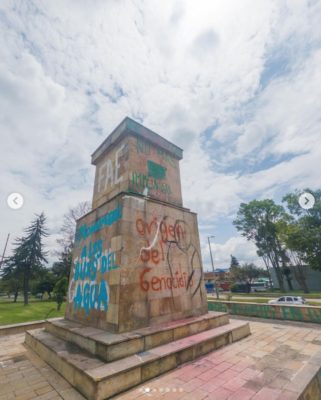Search
To search for an exact match, type the word or phrase you want in quotation marks.
A*DESK has been offering since 2002 contents about criticism and contemporary art. A*DESK has become consolidated thanks to all those who have believed in the project, all those who have followed us, debating, participating and collaborating. Many people have collaborated with A*DESK, and continue to do so. Their efforts, knowledge and belief in the project are what make it grow internationally. At A*DESK we have also generated work for over one hundred professionals in culture, from small collaborations with reviews and classes, to more prolonged and intense collaborations.
At A*DESK we believe in the need for free and universal access to culture and knowledge. We want to carry on being independent, remaining open to more ideas and opinions. If you believe in A*DESK, we need your backing to be able to continue. You can now participate in the project by supporting it. You can choose how much you want to contribute to the project.
You can decide how much you want to bring to the project.

This issue is an attempt to create a critical perspective on monuments. One year ago, the world watched as the murder of George Floyd unleashed a series of reactions and protests, among them several statues representative of western colonialist power torn from their pedestals. Iconoclasm (understood as a response to images) is an important element in our present world. Beyond an analysis of violence against images, it has also proven essential to recognize and take responsibility for the causes of these reactions. I am not referring merely to the reactions of rejection and opposition that these monuments provoke, but to the defense mechanisms that these same attacks provoke. Why does the removal of these objects provoke so much indignation when there is such an obvious lack of social justice?
As hard as it may be to admit, monuments mobilize a series of narratives that are intertwined with our past and that determine the way in which we remember history. The very nature of the material (stone or iron) indicates that these objects were made to resist, to endure into the future. There are those who still think that commemoration is a monument’s only objective but, in fact, their intention is to maintain a privileged position for a long time.
Stone and iron acquire an almost divine quality, beyond reproach, when they are transformed into monuments that forge a national identity, and in this way people can avoid responsibility in terms of what is represented. As if we weren’t in charge of what we decide to praise! As if we are not in control of our own identity, however national it may be! History is far from being beyond reproach. It is written and executed by human hands, and it is our responsibility to critically consider the space we give to facts and the way they are remembered.
Images create society by affecting how we understand ourselves as integral members of the social sphere. Which is why it is our responsibility to deconstruct their emotional roots and to take a critical position regarding the images that inhabit our streets. All the texts in this issue agree that the solution lies in remembering the past in another way.
Mikel Herran writes about the recent demolition of the statue of Sebastián de Belalcázar in Morro de Tulcán by Misak Indians. Two antagonistic narratives clashed after this demolition, both of them including certain people and excluding others. However, one narrative considers itself “the truth” while the other exists on the margins. To end the successive confrontations, Mikel proposes the need for explicit recognition of the construction of hegemonic narratives and their critical analysis.
Ana Andrés interviews Johanna Palmeyro about her project Justicia Museal (Museum Justice). Museums and archives suffer from many well-known problems. One of them, like monuments, is that they are designed to exclude groups. Not all people have access to occupy pedestals, nor can everyone pass the security gates that afford access to knowledge and culture. Justicia Museal seeks to respond to life on the streets while disobeying the institutions. In other words, it seeks to make museums live on the street instead of bringing people into its exhibition rooms. She puts up posters in the streets that, inadvertently, pose an alternative to monuments.
Inés Plasencia points out how essential it is to celebrate histories away from pedestals, and the urgent need to eliminate from our national identities the stubborn residues from the past that make living in an egalitarian society impossible for all people. These remnants of narratives, both the surviving monuments and the very idea of a pedestal, are in need of regeneration. Not only should all pedestals be eliminated, she argues, but the future exists for heroines who do not want monuments built for them.
Finally, Sergio Beltrán points out that the violence enacted against monuments is nothing more than the projection of that which is received from the power structures. After all, whiteness continues to go unpunished. How can we escape this dynamic? And, specifically, how can we escape the power exerted on our memory and on our imagination? Sergio points out how through science fiction we can remember pasts, presents and futures that have not yet happened and prepare for them, creating them or preventing them from happening.
(Featured image: Empty pedestal in Bogotá on June 11, 2021 after the Christopher Columbus statue was toppled by Misak people. Source: https://www.instagram.com/p/CQCBoqZJetN/ ).

Virginia Lázaro Villa, lives in London, she is an artist and art critic and what she’s most interested in is iconoclasm and the destruction of things in general. She’s co-directed since 2015 the contemporary art magazine and platform Nosotros and for a while now has worked writing for different media and magazines, as well as doing a few other odd jobs that bring in the real money.
"A desk is a dangerous place from which to watch the world" (John Le Carré)